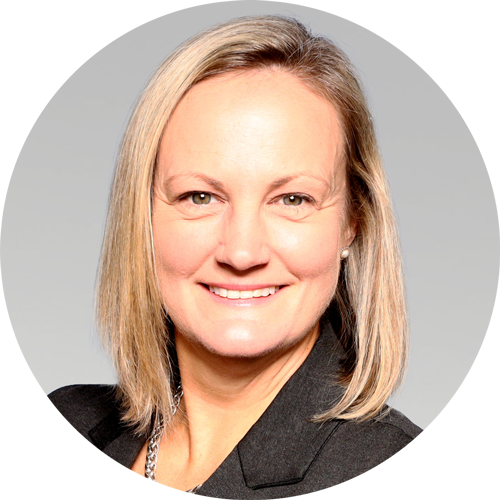As buzz around conversational AI reached a fever pitch last year, a new term began gaining traction: "AI agents."
Over the past twelve months, Google searches for AI agents have increased nearly tenfold. While the category of "agentic AI" may seem to have appeared from nowhere, it has quickly become one of the most talked-about trends in tech.
Yet, descriptions of agentic AI are still largely abstract, making it difficult to grasp what sets it apart or how it might apply in
Read More
Health IT & Digital Health-Opinion | Op-Eds | Guest Columns | Analysis, Insights - HIT Consultant
Navigating the New HIPAA Security Rule: A Guide for Healthcare Leaders
Major cybersecurity breaches continue to plague the US healthcare industry, and on December 27, 2024, the U.S. Department of Health and Human Services (HHS), via its Office for Civil Rights (OCR), issued a Notice of Proposed Rulemaking (NPRM) to amend the HIPAA Security Rule, titled "The HIPAA Security Rule to Strengthen the Cybersecurity of Electronic Protected Health Information". Comments were requested and over 4000 were received before the comment period ended on March 7 2025. Let's dissect
Read More
Emerging Cyber Threats to AI-Based Diagnostics and Clinical Decision Support Tools
As hyperbolic words go, transformation ranks near the top of the list. Yet, when something is truly transformative, it’s undeniable. And that is exactly what we have been witnessing with the use of artificial intelligence (AI) within the healthcare industry; a true digital transformation revolution.
With the AI healthcare market valued at $26.69 billion in 2024, and projected to reach $613.81 billion by 2034, this transformation is not only reducing operational friction in
Read More
The Seller’s Guide to Digital Health: Preparing for a Profitable Practice Sale
When it comes to preparing a healthcare practice for sale, many owners tend to focus on traditional business metrics—revenue trends, operational efficiency, and patient loyalty. But in today’s market, one critical driver of valuation is often overlooked: the strength of the technology infrastructure.
Healthcare buyers are increasingly concerned with not just the usual factors like financials, but how ready a practice is to handle and mitigate digital risks, integrate with new systems
Read More
6 Communication Strategies to Improve Rural Health Outcomes
According to the Centers for Disease Control and Prevention (CDC), rural Americans have a higher risk of premature death from heart disease, cancer, respiratory disease, stroke, and unintentional injuries than urban residents. Challenges related to social determinants of health (SDOH) such as poverty, lack of healthy food options, and poor transportation contribute to the problem.
Access also remains a key hurdle. One in five Americans lives in a rural area, where provider shortages account
Read More
Strategies for Promoting Workplace Safety for Nurses
Nurses bring dedication to health systems, outpatient centers, hospitals, and more, committing their lives to caring for those in the community who need it most. Unfortunately, that commitment often comes with the risk of violence in their workplace. One of the most impactful ways healthcare systems can show nurses that they care is through a strong workplace violence prevention plan.
The Data on Workplace Violence in Healthcare
In 2024, National Nurses United published a report
Read More
Reimagining Parkinson’s Research: Unlocking the Power of Real-World Data and AI
Parkinson’s Disease (PD) is considered one of the most complex and challenging neurodegenerative disorders of our time. It affects nearly one million people in the United States alone, with approximately 90,000 new diagnoses each year. Characterized by progressive motor symptoms such as tremor, rigidity, and bradykinesia, as well as a host of non-motor symptoms, Parkinson’s presents with a wide range of manifestations and variable progression patterns. This complexity makes it particularly
Read More
AI in Pharmacovigilance: Why True Transformation Starts with Workflow Re-Engineering
There is no doubt that the introduction of artificial intelligence into the field of pharmacovigilance is making waves. According to a 2025 McKinsey survey of leaders in the pharma and MedTech industries, 32% of life sciences organizations are spending $5 million or more on generative AI budgets. Specifically, there was a 7% increase in the number of respondents expecting to allocate more than $10 million in generative AI budgets, and a 5% increase in respondents planning to spend between $5 and
Read More
The End of Manual RCM? How AI is Automating Claim Remediation
In the complex and often frustrating world of healthcare billing, claim denials, underpayments, and repeated resubmissions are among the most persistent and costly challenges faced by providers. The process is time-consuming, error-prone, and resource-intensive which results in wasted time and detracts from patient care. Fortunately, advanced machine learning (ML) and artificial intelligence (AI) are transforming this process, by helping providers reduce the time, cost, and frustration
Read More
The AI Dilemma—A New Arms Race in Healthcare Cybersecurity
Artificial intelligence is becoming healthcare’s greatest disruptor. AI is improving how we optimize diagnostics, personalize care, and automate administrative tasks at a scale never seen before. But while hospitals and healthcare organizations rush to harness AI’s potential, cybercriminals are doing the same to exploit its weaknesses.
The result is a new kind of arms race. How can healthcare leaders harness AI to improve patient care before attackers weaponize it to launch cyberattacks
Read More










